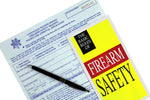Pepper spray has long been regarded as a popular self-defense tool, providing individuals with a non-lethal means of protecting themselves in potentially dangerous situations. With its widespread availability and ease of use, pepper spray has become a go-to option for personal safety. However, to truly harness its power, it is essential to understand how does pepper spray works and why this knowledge is crucial for effective use.
While pepper spray is a widely available self-defense tool, it is not a magic solution. Merely carrying a canister does not guarantee safety unless one knows how to use it effectively. Understanding the mechanism of action behind pepper spray is essential for several reasons.
What is Pepper Spray?
Pepper spray is a chemical irritant that typically comes in the form of an aerosol spray. It contains a mixture of chemicals, the most significant component being capsaicin. Capsaicin is an active ingredient derived from chili peppers, specifically from the oily resin found in their fruits. This compound is responsible for the pungency and heat associated with spicy foods.
In addition to capsaicin, pepper spray may contain other ingredients such as solvents, propellants, and dyes. These additional components help to create a formulation that is effective, safe to use, and easily deployable.
Key ingredient: Capsaicin
Capsaicin, the primary active ingredient in pepper spray, is a potent irritant. It interacts with the body's sensory receptors, particularly the Transient Receptor Potential Vanilloid 1 (TRPV1) receptors, which are responsible for detecting heat and pain. When capsaicin comes into contact with these receptors, it triggers a series of physiological responses.
The reaction to capsaicin causes an intense burning sensation, pain, and discomfort. It leads to dilation of blood vessels, increased blood flow, and inflammation in the affected area. These effects are particularly pronounced when pepper spray comes into contact with sensitive tissues like the eyes, nose, and skin.
Different formulations and strengths available in the market
Pepper spray is available in various formulations and strengths to cater to different user preferences and requirements. The most common types include:
1. Stream spray: This type of pepper spray releases a concentrated, targeted stream of liquid, providing accuracy and a longer range. It is suitable for outdoor use or situations where accuracy is crucial.
2. Cone spray: Cone spray releases a wider, cone-shaped spray pattern, making it easier to hit a target. It is useful in indoor settings or when facing multiple attackers.
3. Foam spray: Foam spray creates a thick foam upon contact, adhering to the target's face and making it harder for them to wipe off. It is effective in windy conditions or situations where there is a risk of blowback.
4. Gel spray: Gel spray releases a sticky gel-like substance that adheres to the target's face, reducing the risk of blowback and allowing for better aim and control. It is suitable for indoor use or in crowded areas.
The Mechanism of Action
Pepper spray's effectiveness as a self-defense tool lies in its ability to disrupt and overwhelm the body's sensory and physiological systems. By understanding how pepper spray interacts with the body, we can gain insights into its mechanism of action and the effects it produces.
A. Interaction with the sensory system
1. The role of pain receptors (TRPV1) and their sensitivity to capsaicin: When pepper spray comes into contact with the body, the capsaicin it contains interacts with a specific type of pain receptor called Transient Receptor Potential Vanilloid 1 (TRPV1). These receptors are primarily found in nerve endings and are responsible for detecting heat and pain signals.
2. Capsaicin binds to the TRPV1 receptors, effectively activating them and leading to a cascade of physiological responses. This interaction triggers the transmission of pain signals to the brain, resulting in an intense burning sensation.
3. Triggering the release of neurotransmitters, such as substance P: In addition to activating pain receptors, capsaicin also stimulates the release of various neurotransmitters, with substance P being one of the key players. Substance P is a neuropeptide involved in transmitting pain signals to the brain. When released in response to capsaicin, it contributes to the amplification of the pain sensation experienced by the individual sprayed with pepper spray.
B. Effects on the eyes
1. Irritation, inflammation, and temporary vision impairment: Pepper spray's effects on the eyes are particularly pronounced and debilitating. When sprayed in the face, the capsaicin irritates the sensitive tissues of the eyes, leading to immediate and intense discomfort. The eyes may become red, swollen, and inflamed.
2. Additionally, pepper spray causes the blood vessels in the eyes to dilate, further exacerbating the redness and inflammation. The combination of irritation and inflammation results in temporary vision impairment, making it difficult for the assailant to see clearly and effectively inhibiting their ability to pursue or harm the victim.
3. Blinking and tearing response: When exposed to pepper spray, the body's natural defense mechanism kicks in, leading to a strong blinking and tearing response. The eyes instinctively try to protect themselves by blinking rapidly in an attempt to flush out the irritant. The tearing response occurs as tears are produced in excess to wash away the capsaicin from the surface of the eyes. These reflexes further contribute to temporary visual impairment and hinder the attacker's ability to continue their assault.
C. Respiratory effects
1. Irritation of the nasal passages and airways: Inhaling pepper spray causes significant irritation to the nasal passages and respiratory system. The capsaicin particles present in the spray irritate the mucous membranes lining the nasal passages, triggering a burning sensation and discomfort. This irritation extends to the airways, causing inflammation and constriction.
2. Coughing, choking, and shortness of breath: As the respiratory system reacts to the capsaicin, individuals exposed to pepper spray may experience uncontrollable coughing, choking, and a sensation of difficulty in breathing. The irritation and inflammation in the airways can lead to temporary shortness of breath, further incapacitating the attacker and providing the victim with an opportunity to escape.
Safety Considerations and Usage Tips:
When it comes to using pepper spray as a self-defense tool, it is essential to prioritize safety and responsible usage. Understanding the legal regulations, proper deployment techniques, and precautions to avoid self-contamination can enhance the effectiveness and minimize the risks associated with pepper spray.
A. Legal regulations and restrictions on pepper spray
Before purchasing and carrying pepper spray, it is crucial to familiarize yourself with the legal regulations and restrictions in your jurisdiction. Laws regarding the possession, use, and purchase of pepper spray can vary between countries, states, and even municipalities. Research and understand the specific laws applicable to your area, including any age restrictions, limitations on the concentration of active ingredients, and any required permits or licenses.
B. Proper deployment techniques
To maximize the effectiveness of pepper spray and ensure your safety, it is important to learn and practice proper deployment techniques. Here are some guidelines to follow:
1. Familiarize yourself with your pepper spray: Read the instructions provided by the manufacturer and understand how your specific pepper spray model works. Different canisters may have variations in activation methods, safety mechanisms, and range. Knowing your product will allow you to use it more effectively when faced with a threatening situation.
2. Be prepared and ready: Keep your pepper spray easily accessible, ideally in a location where you can quickly retrieve it. Practice retrieving and holding your pepper spray to build muscle memory and familiarity.
3. Aim for the attacker's face: When deploying pepper spray, aim for the attacker's face, specifically their eyes and nose. This maximizes the chances of incapacitating them and reduces the risk of blowback affecting you or innocent bystanders.
4. Maintain a safe distance: Pepper spray typically has a recommended range. Stay at a safe distance from the attacker to ensure the spray reaches its intended target effectively. Close the gap only if necessary for your personal safety or escape.
5. Use short bursts: Instead of holding down the trigger continuously, utilize short bursts of spray. This conserves your pepper spray's contents and allows for better control and accuracy.
C. Precautions for users to avoid self-contamination
While pepper spray is intended to incapacitate an attacker, it is important to take precautions to avoid self-contamination. Follow these tips to minimize the risk of accidentally exposing yourself to the spray:
1. Be aware of wind direction: Before deploying pepper spray, assess the wind direction. Position yourself upwind or at an angle that reduces the chance of the spray blowing back towards you. This prevents inadvertently affecting your own vision and breathing.
2. Shield yourself if necessary: If you anticipate using pepper spray in close quarters or indoors, consider using your free hand as a shield to protect your face. This can help minimize the risk of spray particles reaching your eyes or respiratory system.
3. Practice proper hand hygiene: After deploying pepper spray or coming into contact with the spray residue, avoid touching your face or any sensitive areas. Wash your hands thoroughly with soap and water as soon as possible to remove any potential traces of capsaicin.
In conclusion, understanding how pepper spray works equips individuals with the knowledge needed to make informed choices and employ this self-defense tool effectively. By embracing this knowledge and practicing responsible use, individuals can enhance their personal safety and potentially deter or mitigate threats in dangerous situations.
Remember, while pepper spray can be an effective tool, it is just one part of a comprehensive self-defense strategy. It is always advisable to prioritize personal safety by staying aware of your surroundings, utilizing de-escalation techniques, and seeking professional self-defense training when possible.
Stay informed, stay safe, and empower yourself with the knowledge necessary to protect yourself and those around you.





